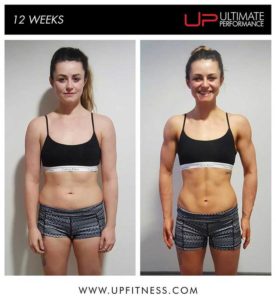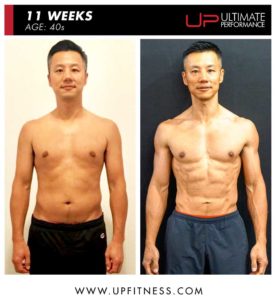Everyone hits the gym for different reasons, but whether you’re worried about aesthetics or working towards a certain strength, the key to achieving your goals is body composition. Many people focus too much on their weight, but this isn’t a good indicator of health or fitness level: you can lose weight without losing fat, and you can gain weight without gaining muscle. Having an understanding of body composition and the factors that influence it will allow you to establish realistic fitness goals and bring you closer to the body of your dreams. Ultimate Performance personal trainer Matthew Leeb shares everything you need to know about body composition.

What is body composition?
Body composition refers to the percentage of your body weight that is fat versus the percentage that is lean body mass (LBM), i.e. muscle, bone and water. For this reason, body composition is a major determinant of appearance, more so than weight. To illustrate, imagine two people of the same weight but with different body fat percentages/body compositions—despite being the same weight they may look totally different.
Why is it important?
Carrying excess, or too little, body fat is associated with health risks in men and women while retaining or increasing one’s LBM helps to bolster metabolism, improve overall health, and give you the “toned” appearance many people hit the gym to achieve. Most importantly though, having a measurement of body composition will allow you to more accurately track what is changing in your body when you diet and exercise.
Measurements and Misconceptions
Having a measurement of your body composition becomes important when trying to establish realistic goals for yourself. Knowing your starting point and what you’d like to achieve is crucial but there is a caveat to mention. When setting physique goals you must consider that there is a minimum amount of essential fat that is absolutely necessary for men and women. In general, essential fat is taken as 3-4% for men and 10-12% for women. It should be said that attaining this level of body fat will come with negative physiological changes and long-term maintenance is ill-advised, if not impossible.

What influences someone’s body composition?
While some things influencing your body composition are out of your control, your appearance is largely a product of the energy you put into changing it. Your gender and genetics will determine fat-storage patterning and your maximum achievable muscularity but absolutely anyone can achieve a body composition transformation in as short as 12-weeks through effort, discipline, and consistency.
How to most efficiently alter your body composition
The primary driver of weight loss is being in an energy deficit: this means that calorie expenditure is higher than calorie intake. Unfortunately, most people turn to fad hypocaloric diets or the cardio section of the gym to lose weight. Now, while this will technically do the job, it will not give you the “toned” physique: this can cause muscle loss which will lead to a softer appearance and won’t necessarily lead to you looking ‘fit’.
To achieve the toned, athletic look, the optimal plan will be one that reduces weight while retaining LBM. Therefore, a better approach is to focus on three simple things: first, increase daily protein through plant or animal sources; second, eliminate high calorie processed foods from your diet; lastly, introduce weight training 3-5 times per week. By doing so you will signal your body to retain LBM and predominantly mobilise your stored fat for energy.


Check out Ultimate Performance for personal training plans and more body transformation stories.



